What is AI customer journey?
The AI customer journey represents the seamless integration of artificial intelligence (AI) into every touchpoint of a customer's interaction with a business. Encompassing all stages, from initial awareness to post-purchase support, it leverages AI to elevate customer experiences, fostering heightened satisfaction, loyalty and revenue. In an era where the distinction between pain points and friction becomes increasingly indistinct, the strategic deployment of AI-driven best practices — automation, predictive analytics and sentiment analysis—paves the way for crafting an intelligent, adaptive and fulfilling AI customer journey.
Evolution of AI in customer journey
In the past, customer service was a reactive affair and relegated to basic query handling. While this approach provided personalized support, it was often sluggish and inefficient, leaving customers frustrated and waiting for resolutions.
Advent of AI in customer service: With this, customer journeys became more agile and responsive, handling routine tasks and offering information promptly. The narrative evolved further as sentiment analysis capabilities were infused, enabling AI to gauge customer emotions and tailor responses accordingly. This marked a pivotal shift of AI in customer service— from reactive problem-solving to proactive, empathetic engagement.
AI-powered chatbots and virtual agents: Chatbots and virtual agents seamlessly integrated into the AI customer journey, becoming the first line of defense. They adeptly answered frequently asked questions, resolved simple issues and escalated complex ones to human agents.
Today, AI in customer service has expanded beyond FAQ chatbots and intelligent virtual agents, permeating every aspect of the AI customer journey.AI-driven recommendation engines: They suggest products and services tailored to individual preferences, while predictive analytics pre-empt customer needs and address potential issues proactively, reducing contact volumes and agent caseloads.
Emergence of generative AI in customer experience: This adds another layer of sophistication. Generative AI, with its ability to create context-aware and human-like responses, enhances customer interactions, providing a more natural and seamless experience throughout the AI customer journey. This advancement underscores the ongoing evolution and sophistication of AI in shaping positive customer experiences.
Interesting read: Impact of generative AI on customer experience
Why is AI important to the customer journey?
The customer journey has long grappled with challenges such as limited accessibility, slow response times, a dearth of personalization, siloed data systems and inconsistent support, resulting in a fragmented and disjointed experience. Recognizing these pain points, AI intervention in the customer journey became imperative.
Managing customer service bottlenecks: Managing the workforce is critical as customer expectations and call volumes escalate. However, the workforce need not be scaled in direct proportion. Optimal workforce management is paramount and the strategic deployment of contact center AI plays a pivotal role by forecasting contact volumes and scheduling agents well in advance, preventing over- or under-staffing.
Anticipating customer needs: Unlocking the real power of AI lies in transforming data from contact center CRM and other customer touchpoints into actionable insights. With the AI customer journey, tracking customer behavior extends beyond website visits. It delves into every scroll, registering likes and dislikes. AI captures every intent and autonomously recommends ideal solutions without requiring agent intervention.
Overcoming data overload: The influx of data with each customer interaction surpasses manual monitoring capabilities. The AI customer journey takes charge by automating call listening and monitoring. It adeptly identifies trends and patterns in customer behaviors and preferences. This automation not only relieves the burden of manual tracking but also significantly enhances the probability of discovering new business opportunities, facilitating customer engagement, upselling and cross-selling.
Download eBook: Learn how to bridge CX gaps using AI and automation
AI customer journey vs. traditional customer journey
Aspect | AI Customer Journey | Traditional Customer Journey |
Adaptability | Adapts to evolving customer needs and market trends. | Limited flexibility to adapt quickly to changing dynamics. |
Scalability | Scales operations seamlessly to accommodate growth. | Limited scalability, often struggling with increased demands. |
Response time | Real-time responses, reducing wait times. | Slower response times, leading to potential customer frustration. |
Personalization | Tailored experiences at scale through predictive analytics. | Limited scope for personalization in interactions. |
Data collection | Automated and extensive data sets, collected from varied sources, and providing a holistic view | Manual and error-prone, especially with large datasets. |
Proactivity | Proactive identification and resolution of potential issues. | Reactive problem-solving without anticipation of needs. |
Customer insights | Granular insights based on real-time customer data | Limited insights based on historical data and processed via humans |
Support mechanisms | AI-powered chatbots and virtual agents complement human support. | Solely reliant on human agents for customer support. |
Compliance | AI systems can be designed to ensure regulatory compliance through automation. | Traditional methods may require more manual efforts to ensure compliance, potentially leading to higher risks. |
Learn more: What is customer experience journey?
7 stages of AI customer journey
While customers may not explicitly articulate their needs, they unmistakably express what they do not want. Understanding their preferences and requirements allows you to tailor your offerings. This marks the inception of the first stage of the AI customer journey — not vastly distinct from conventional customer journey stages but profoundly different in its approach, as the entire journey is infused with AI.
AI customer journey: Presale stage
1. Awareness
Customers at this stage are often inquisitive and receptive. They are open to discovering new products or services. Aligning live agents to attend to these visitors is not scalable and does not confirm a conversion either. How AI helps: AI identifies user intent through advanced customer interaction analytics, understanding behavioral patterns and preferences. During the awareness stage, you can engage customers through intelligent virtual agents and live chat (for high-intent engagements), offering personalized recommendations based on their behavior. This tailored engagement helps capture attention and foster a positive initial impression.
2. Consideration
In the consideration stage, customers evaluate options and compare products or services. This is the phase where, as a brand, you must convince customers that your products and services are the best fit for their needs. Repeated page visits and increased browsing time on your website and app are indicative signs that customers are considering your offerings. This presents an opportune moment to engage with them. How AI helps: AI aids by leveraging predictive analytics to discern user preferences and predict product interests. In the consideration stage, you can use AI to engage customers through intelligent suggestions, offering options aligned with their preferences. This proactive assistance offers conversational intelligence and guides customers through their decision-making process.
3. Decision
Customers in the decision stage are ready to make a purchase. Their mindset is action-oriented and they are looking for seamless and efficient processes to finalize their decision.
How AI helps: AI plays a crucial role in the decision stage by furnishing detailed information and comparisons through chatbots, live chat and assisting agents on live calls. It identifies user intent, responds to queries instantly and recommends suitable solutions.
Good to know: With a modern conversational AI platform, you can seamlessly send product catalogs to customers via digital channels. Each message can showcase up to 30 products, complete with images, detailed descriptions, prices and more. You can also track user engagement and leverage proactive prompts tailored to users' behaviors on websites, apps and digital channels, delivering contextual assistance in real-time.
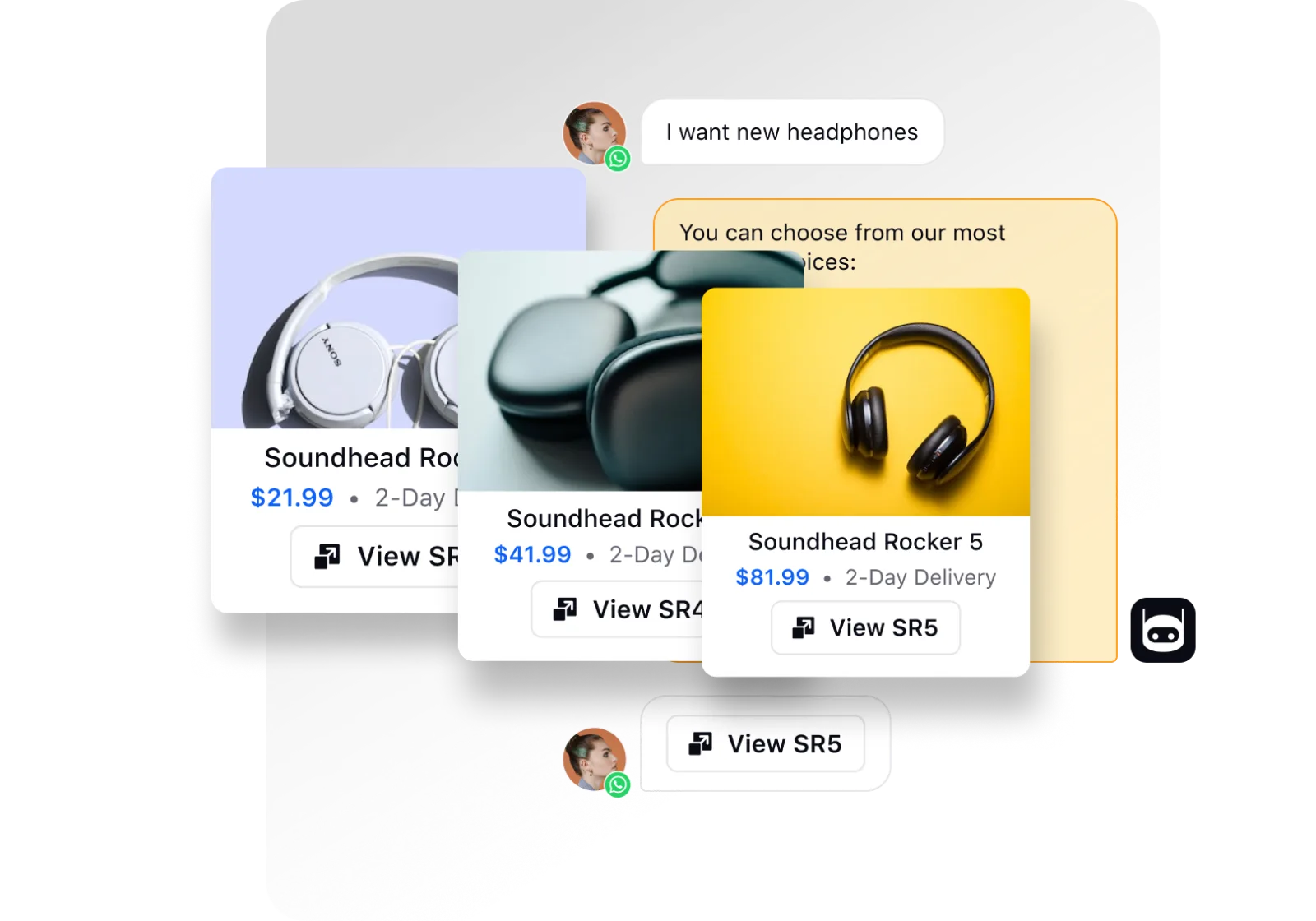
AI customer journey: Purchase stage
4. Sale
AI ensures a seamless purchase process by facilitating transactions and guiding customers through the checkout journey. Virtual assistants contribute to an efficient and user-friendly buying experience.
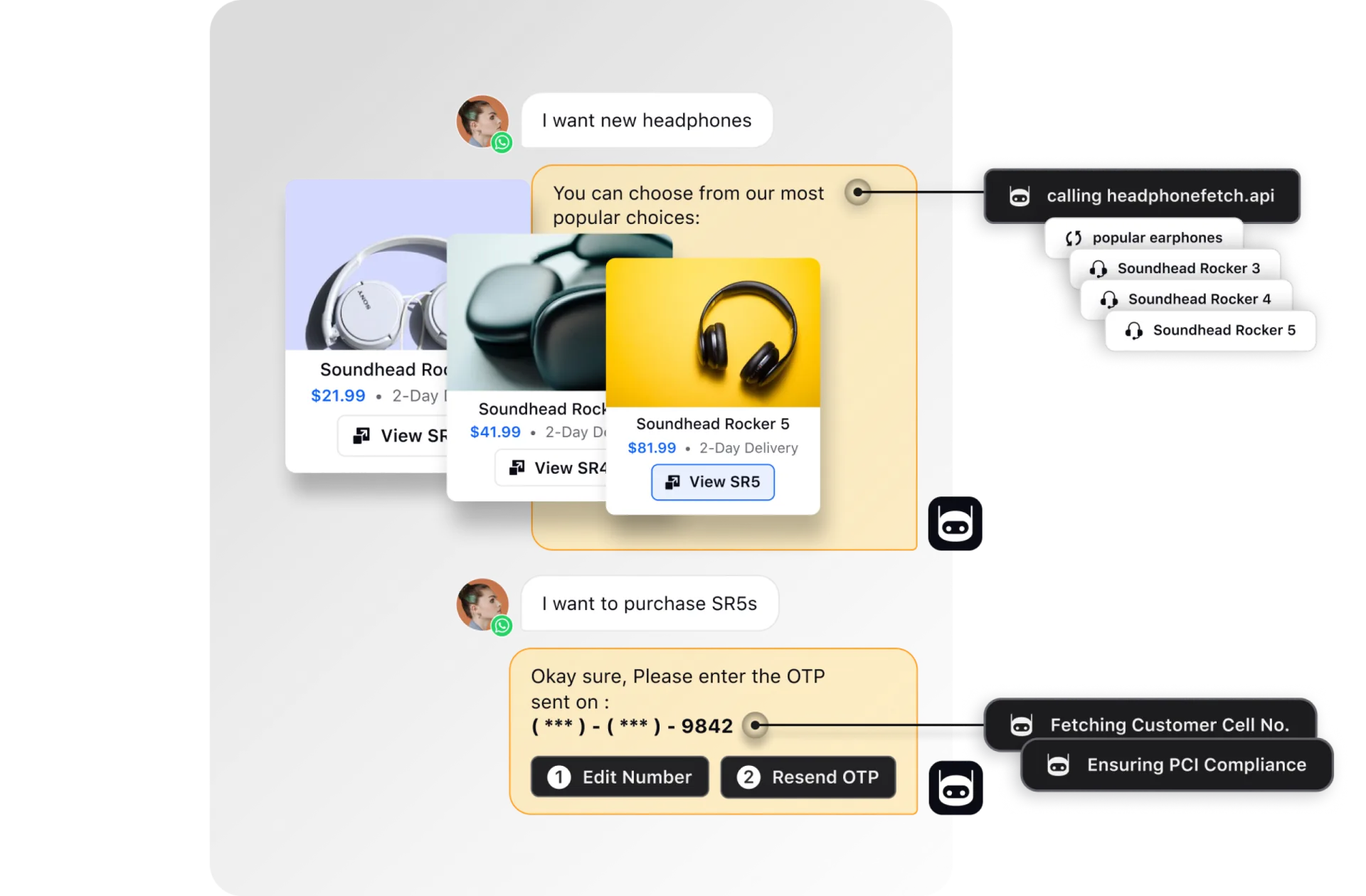
AI customer journey: Post-sale
5. Post-purchase experience
Customers in the post-purchase stage seek enhanced product usage and satisfaction. Their mindset is geared toward exploring complementary products or services that align with their recent purchase.
How AI helps: AI-driven recommendation engines come into play, leveraging the customer's purchase history to suggest complementary items. This not only enhances the post-purchase experience but also aligns with the customer's evolving preferences.
In addition, AI simplifies customer onboarding and enhances product adoption by intelligently analyzing customer interactions. Through guided contact center workflows, it proactively engages passive customers, providing step-by-step assistance. Plus, AI also ensures continuous improvement by sending reminders and soliciting feedback through customer service workflows, fostering a seamless and user-friendly onboarding experience.
Read more: Beyond the purchase — how can you excel at after-sales service?
6. Customer support and service
Customers post-purchase often require support for queries, troubleshooting and issue resolution. Their mindset is focused on ensuring a seamless and personalized post-sale experience. It is critical to note that inefficient customer service can increase customer churn rate and adversely affect your customer retention efforts.
How AI helps: AI-driven virtual assistants and chatbots take center stage in post-sale support. Across various channels, they address common queries, provide troubleshooting assistance and escalate complex issues to human agents when required.
Spread the word: AI-powered unified agent console enables your agents to have immediate access to pertinent information and an exhaustive record of customer interactions spanning various channels. Through continuous monitoring of ongoing conversations, AI offers instantaneous support by suggesting corrections, recommending a knowledge base and proposing optimal actions. This proactive assistance significantly diminishes average hold times, leading to a substantial decrease in the average handle time, potentially up to 30%.
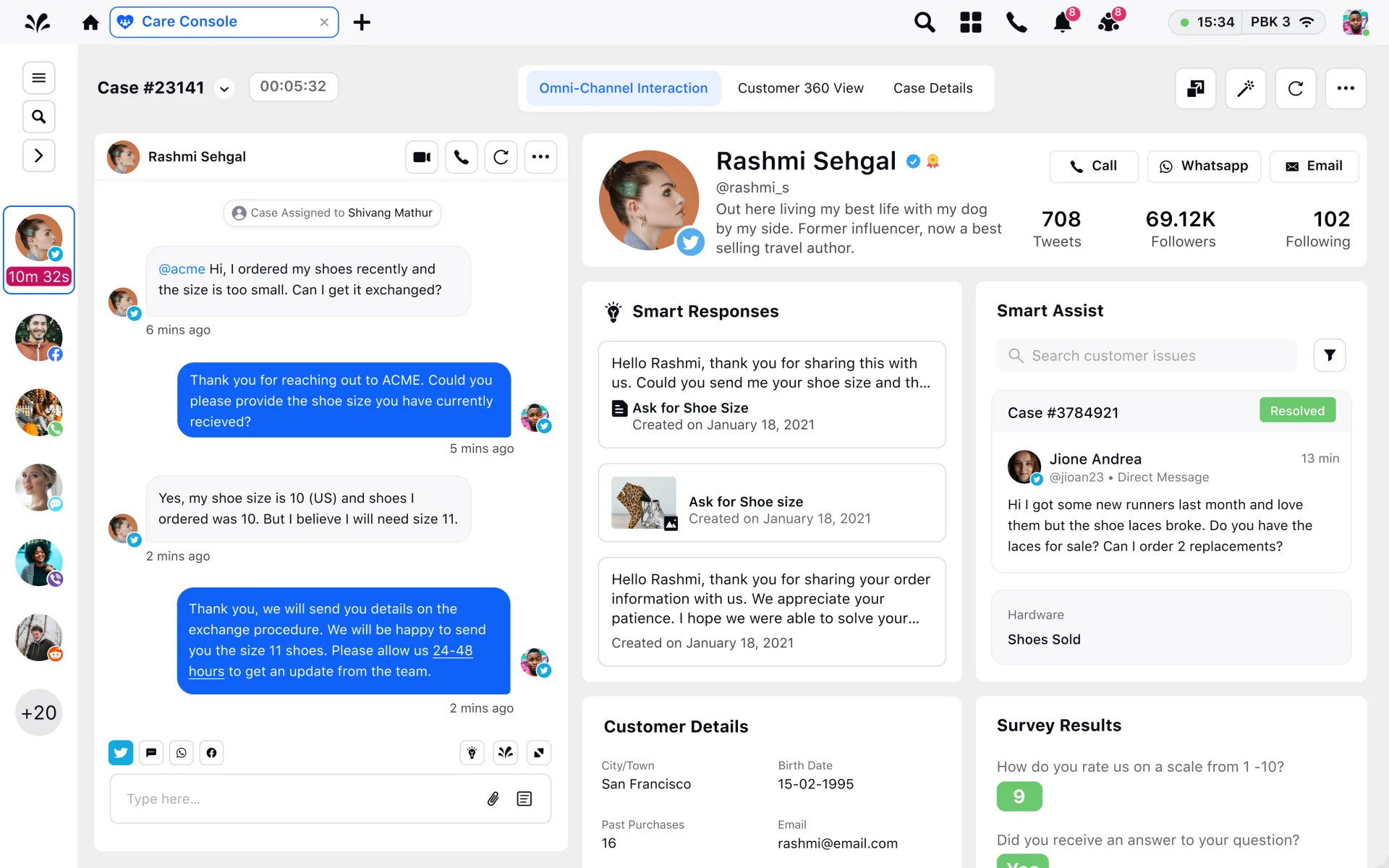
7. Feedback and loyalty
Customers at the feedback and loyalty stage typically reflect on their overall experience and contemplate the value they've gained. Their mindset is inclined towards expressing opinions, contributing feedback and assessing the potential for continued loyalty. How AI helps: AI intervenes by systematically running customer surveys and collecting and analyzing feedback across various channels. By identifying sentiments, preferences and areas for improvement, AI categorizes customers into distinct segments, enabling personalized targeting. Here's precisely how AI accomplishes this.
Loyalty modeling: Utilized to identify and segregate loyal customers who have demonstrated sustained engagement with the brand.
Customer lifetime value models: Applied to discern customers based on their lifetime value, distinguishing between high, medium and low-value segments.
Customer churn model: Pinpoints customers with negative sentiments and are at the risk of leaving.
Uplift model: Targets customers likely to respond positively to promotions, optimizing engagement strategies for post-purchase interactions.
Good to know: With omnichannel survey software, you can gather customer feedback across channels and fill in the missing gaps with sentiment analysis and AI-powered CSAT prediction. You can use this predicted CSAT to set up alerts, escalation logic or analyze agent performance.
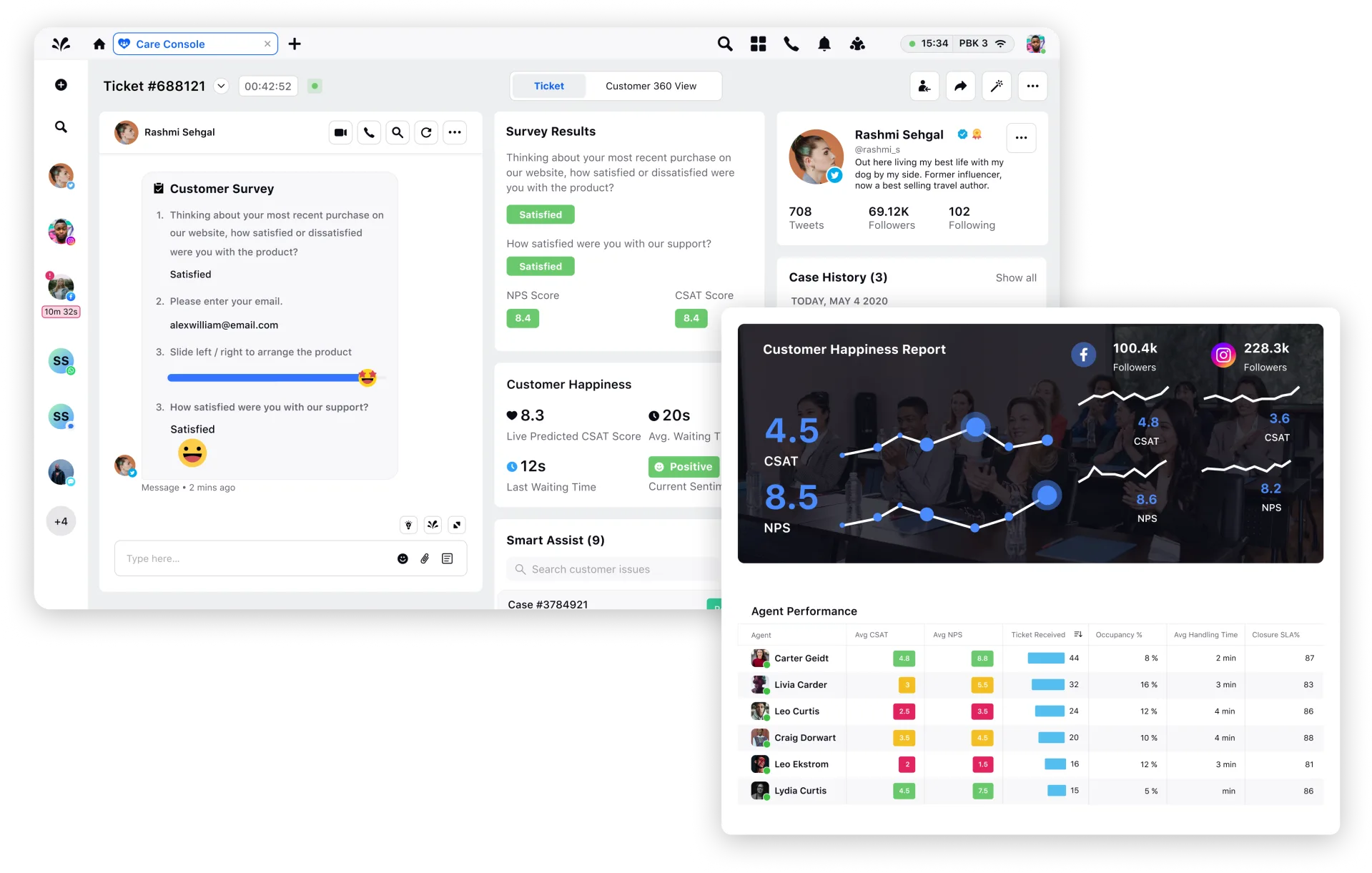
9 ways to optimize AI customer journey for businesses
Optimizing the AI customer journey involves leveraging technology to enhance various customer touchpoints. Let’s explore the integral components that envelop the AI customer journey, shedding light on how these elements seamlessly come together to elevate the overall customer experience.
1. Personalized recommendations
Leveraging predictive analytics, businesses can analyze customer preferences and make informed predictions about forthcoming consumer behaviors. Understanding individual preferences and anticipating their requirements enables precise audience targeting, delivering highly personalized content, product recommendations and offers. This not only enhances conversion rates but also builds customer loyalty.
Moreover, predictive analytics facilitates the judicious allocation of resources, empowering marketers to focus efforts and budgets on channels, campaigns and customer segments most likely to yield optimal returns. This results in cost efficiencies and heightened contact center ROI.
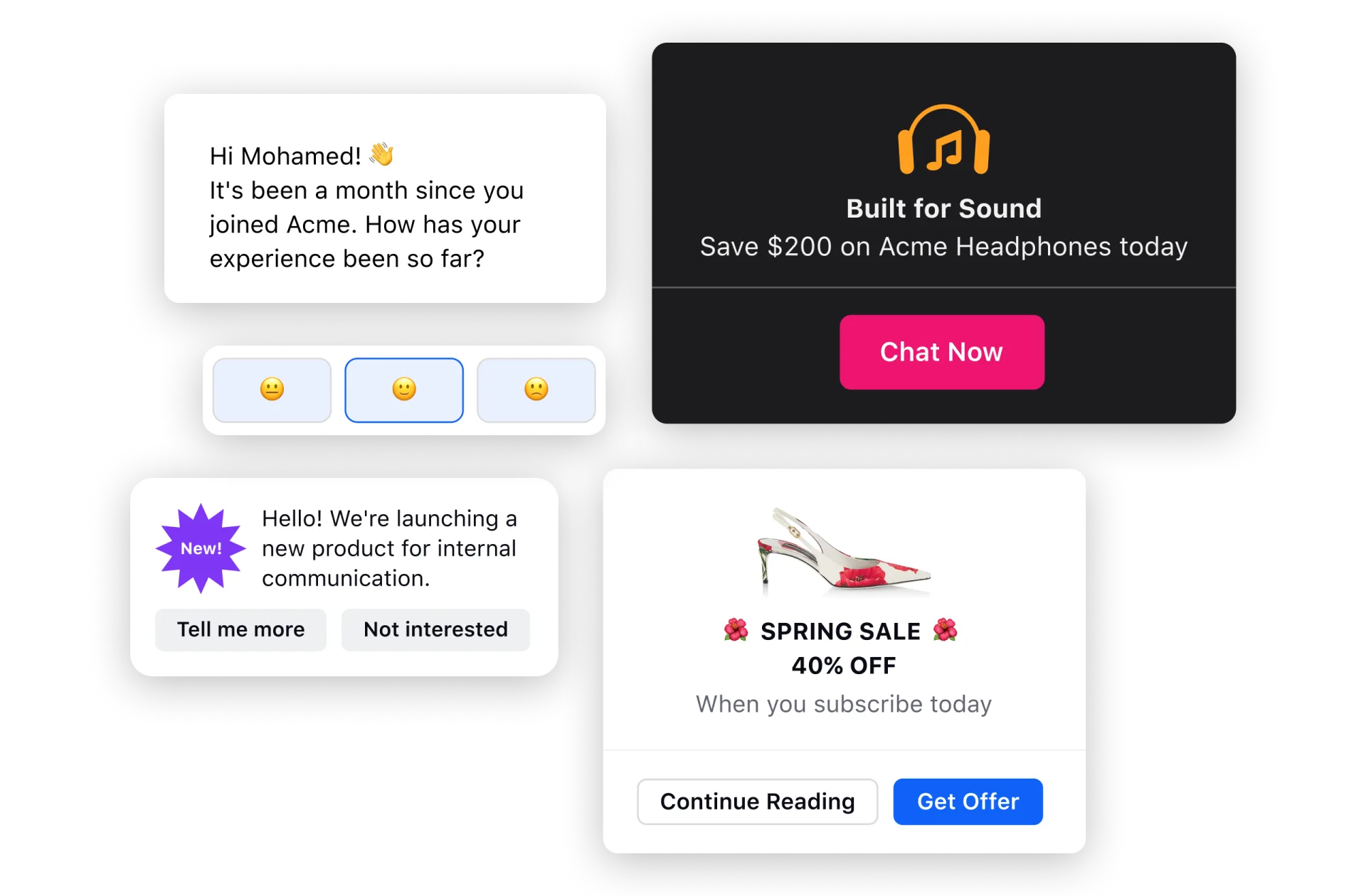
2. Intelligent chatbots and virtual assistants
By integrating AI-powered chatbots across voice and non-voice communication channels, businesses can provide instant support and information. These bots adeptly handle inquiries, offer solutions and guide customers through purchases, ensuring a seamless experience that extends beyond traditional business hours.
Also loved by readers: 15 best chatbot examples from groundbreaking brands
3. AI-fueled workforce planning
AI enhances scheduling processes by analyzing historical data, employee preferences and business demand to create optimized schedules. This ensures that the right agents with the right skills are available at peak times, improving overall operational efficiency. Similarly, AI-based forecasting models leverage historical data and real-time insights to predict future customer service demands. This allows you to allocate resources proactively, ensuring workforce management aligns with anticipated customer needs.
4. Omnichannel consistent experience
A customer can initiate a support chat on a website, continue the conversation via a mobile app and receive follow-up emails, all with consistent information and context. AI ensures that customers are attended to with context every time they reach out, eliminating the need to repeat information.
Good to know: Advanced omnichannel routing software goes beyond conventional call distribution, taking into account the unique skill set of each agent. By intelligently matching customer inquiries with the most qualified and available agent, it ensures that complex issues are directed to experts, resulting in quicker resolutions and increased customer satisfaction.
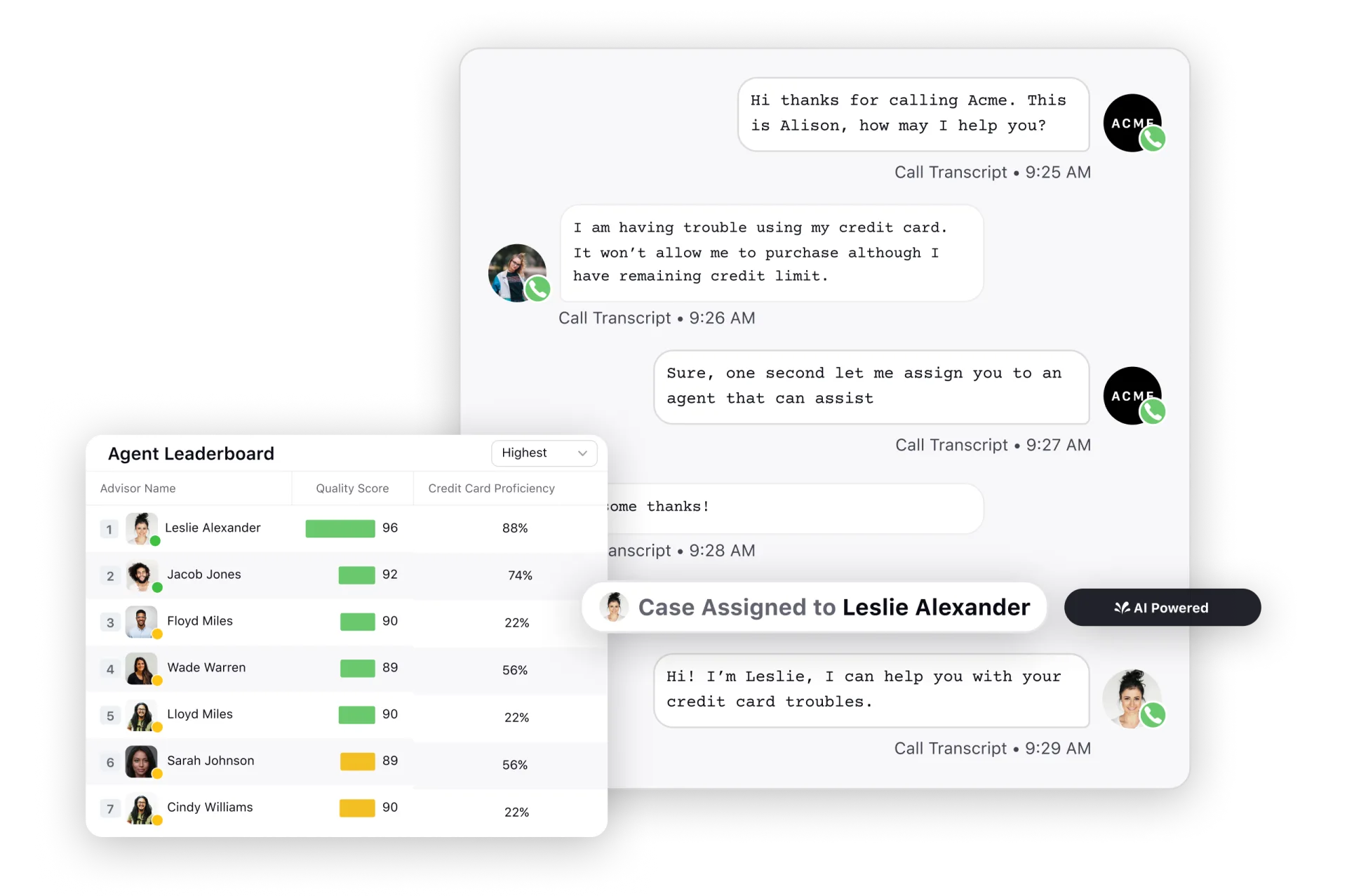
5. Informed decision-making with real-time analytics
AI-powered real-time analytics enable you to monitor ongoing customer interactions, identify patterns and assess the effectiveness of your current strategies. This timely information empowers you to adapt and optimize customer service processes promptly, ensuring that responses align with evolving customer needs.
Do you know: Today, you can respond promptly to events of critical business significance in real-time with AI-powered analytics and reporting software. Simultaneously visualizing the customer journey and agent activities allows you to gain actionable insights into your business operations at multiple levels.
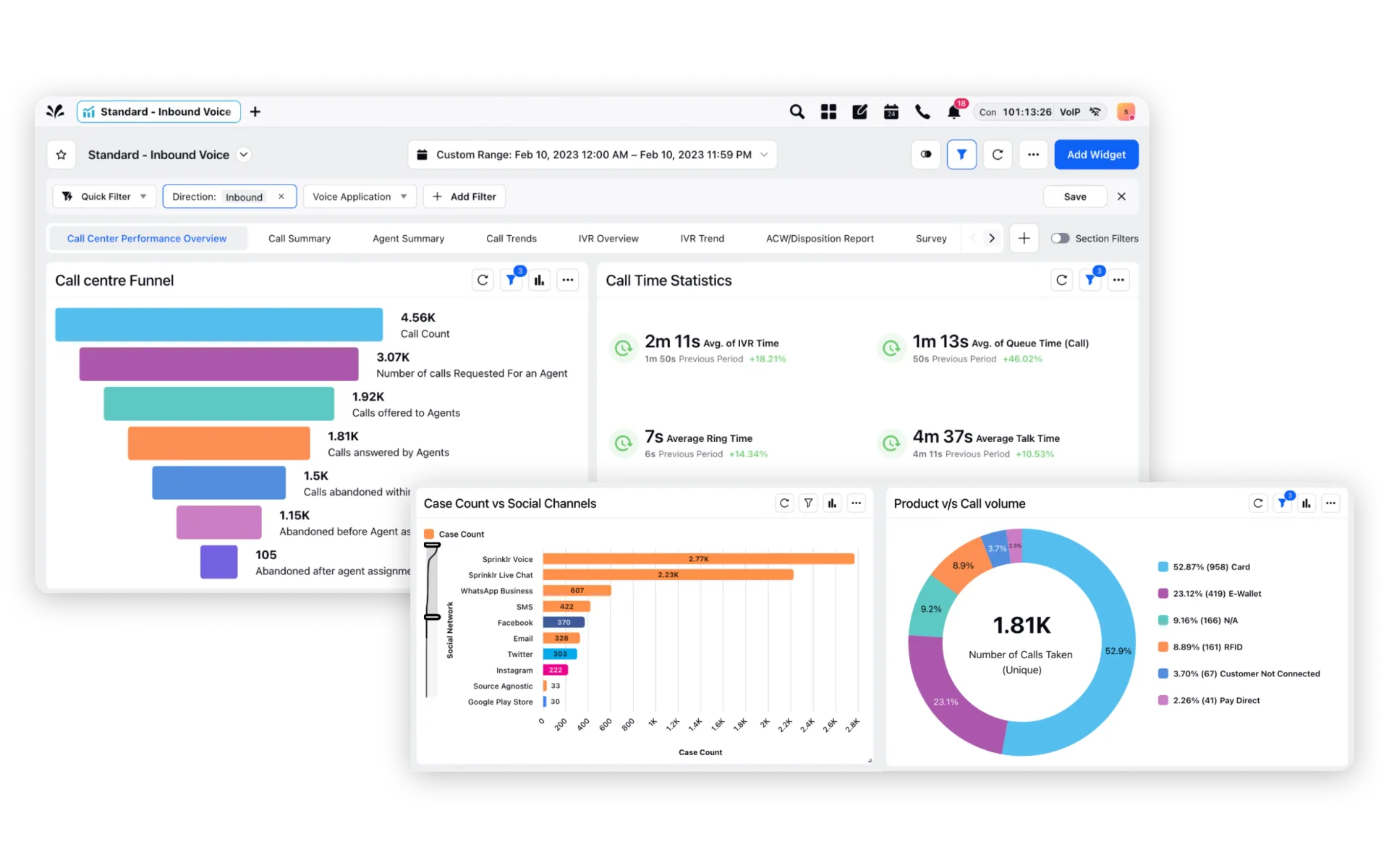
6. Automated follow-up communications
When a customer initiates contact with your inbound contact center, an AI-powered system can instantly trigger follow-up calls using a predictive dialer. This proactive approach ensures that customers receive timely callbacks, checking in on the resolution of their queries or issues. Predictive dialers play a crucial role in managing and optimizing call volumes, ensuring that follow-up calls are made at the right time and by the right agents.
Moreover, predictive dialers use algorithms to predict agent availability, customer availability and other factors to dial numbers automatically. This not only reduces idle time but ensures that agents are connected to live calls more often, enhancing the effectiveness of outbound campaigns.
Deep dive: All you need to know about dialers
7. Multilingual assistance
AI's role in providing multilingual support ensures a diverse and inclusive customer experience. In a global customer service scenario, seamlessly cater to customers from different linguistic backgrounds by employing AI-driven multilingual support. This removes language barriers and enhances customer satisfaction by delivering support in the preferred language.

8. Accessible knowledge base
AI enhances customer self-service resources through the creation and maintenance of comprehensive knowledge bases. These repositories are equipped with AI-driven search functionalities, ensuring that customers can swiftly find relevant information. For instance, in a customer support scenario, an AI-driven knowledge base can offer detailed articles, FAQs and troubleshooting guides, aiding customers in resolving issues without direct human intervention.
Deep dive: Must-have features for free knowledge base software
9. Visual recognition for troubleshooting
In scenarios involving product troubleshooting or technical issues, AI-driven visual recognition comes into play. Customers can use their smartphones to capture images of problematic components and AI algorithms can analyze these images to provide instant solutions. This visual self-service resource enhances efficiency and addresses customer concerns in a more tangible and user-friendly manner.
In the intricate web of customer interactions, you are bound to face a perennial challenge — the need for a seamless, adaptive customer journey. As we navigate this AI-led, transformative era, the synergy between specialized AI models and Generative AI capabilities, such as found in Sprinklr AI+, emerges as a reliable solution.
With Sprinklr AI+, efficiently map the customer journey and streamline conversation while utilizing:
Conversational AI platform: Assess customer intent and sentiment instantaneously.
Quality management software: Pinpoint strengths and areas of improvement for each agent through AI-scoring parameters
Agent assist software: Instantly analyze case context and suggest predictions and next best actions to agents during live conversations on both voice and non-voice channels.
Schedule a demo with our experts today and explore the platform at your own pace.
Frequently Asked Questions
related products
Thank you for contacting us.
A Sprinklr representative will be in touch with you shortly.
Contact us today, and we'll create a customized proposal that addresses your unique business needs.
Request a Demo
Welcome Back,
No need to fill out any forms — you're all set.


